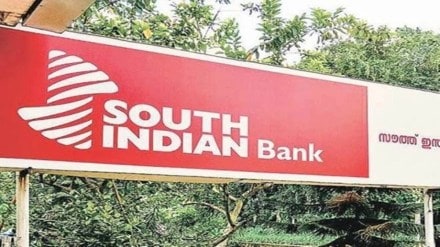South Indian Bank is keen on lending to creditworthy corporates, notwithstanding the bank’s conscious focus on retail, small and small & medium-sized enterprise (SME) borrowers, says managing director & CEO Murali Ramakrishnan.
“Retail cannot be built overnight. It takes a lot of time to build because the ticket size of the loans is very low. But in corporate, you can do two-three deals of Rs 150-200 crore in no time. But blindly building a corporate loan book will put you in difficulty… In 2015-16 (April-March), we acquired a lot of corporate (borrowers) which were not really good-rated corporates and the concentration risk was very high. That is why the bank made a strategy to move away from bulky corporate loans and towards retail and SME,” said Ramakrishnan.
Also Read: Bankers hail RBI monetary policy actions
As on September 30, large corporate loans still comprise the lion’s share of the bank’s overall loan book at 30%. Specifically, ‘AA’ and ‘AAA’ rated borrowers comprise 84.3% of the private sector bank’s corporate loan book.
“We are onboarding BBB cases also, provided we find that they are doing well in the chosen segment and they have had an excellent track record all this while, without any default or delay. You have to start with a short-term facility and then offer them a long-term facility,” Ramakrishnan said.
His comments come at a time when various corporates have been reluctant to spend on long-term assets, and this has kept the banking sector waiting for a full-scale revival of a capital expenditure cycle.
“So, there are specific risks associated with each industry vertical. Corporates will only go for capital expansion when they feel the economy is stable and is not having any shocks,” he said.
Also Read: South Indian Bank Q2 profit at Rs 223 cr
“Today, it will not be in the best interest of any organisation to look at a huge capital outlay for a new project. It may be happening in some sectors but it is not seen across the board,” he added.
Going ahead, South Indian Bank expects its advances to grow at 10-12% in 2022-23. While Ramakrishnan was reluctant to provide a guidance on the bank’s deposit growth, he is confident of maintaining a credit-deposit ratio of 75%.
The Thrissur-based bank’s advances rose 17% year-on-year (YoY) to Rs 67,963 crore as on September 30. Its deposits rose a mere 2% YoY to Rs 88,477 crore.
“We are fairly comfortable with the retail deposit base. We are also carefully looking at bulk deposits. Whenever it is coming at a rate that is making sense, we are going for it,” Ramakrishnan said.
“We do not want to price the deposits too high, because that is not going to be in the best interest of our profitability and net interest margin.”
The bank expects its net interest margin to improve to 3.2% in 2022-23 and 3.5% in 2023-24, from 2.98% in April-September.
“Higher NIM comes from a changing product mix changing and if your product mix is changing, then the riskiness of the portfolio increases,” he said.
“You can charge a higher interest rate for a used car, used commercial vehicle, microfinance or small consumer durable loan, but that also comes with a delinquency.”
The bank expects its gross non-performing asset ratio to fall to 5.2-5.3% as on March 31, 2023, from 5.67% as on September 30.
